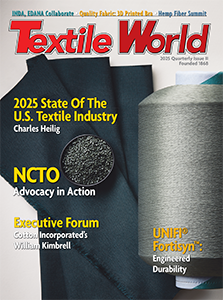COLUMBIA, Mo. — October 30, 2012 — In today’s globalized economy, a large percentage of apparel
products are multinational products as raw materials are produced, transported and assembled in
different countries. However, consumers have little information about where and to what extent
their apparel is produced domestically or overseas. Now, University of Missouri researchers have
found that American consumers place a much higher value on apparel produced entirely in the U.S.
with U.S. raw materials as opposed to products produced partially or entirely overseas. The value
is so high, in fact, that MU experts worry it could be damaging to U.S. apparel manufacturing
businesses and the overall economy.
In a study published in Clothing and Textiles Research Journal, Jung Ha-Brookshire, an
assistant professor in the textile and apparel management department in the College of Human
Environmental Sciences at MU, surveyed American consumers to determine the value they place on
apparel produced in different countries. She showed participants a cotton shirt, told them it was
made in China, and said it sold for $40 in retail stores. She then showed them the same piece of
clothing and told them it was made in the U.S. with U.S. cotton. The study participants valued the
U.S. cotton shirt at $57, which is more than 42 percent higher than the same shirt produced in
China. Ha-Brookshire says this demonstrates a troubling trend for American consumers.
“Americans tend to severely overvalue apparel produced entirely in the U.S.,” Ha-Brookshire
said. “This is concerning because if Americans place higher values on these U.S. products, they
perceive those products to be too expensive and are less likely to buy them, opting instead to buy
similar Chinese-made products perceived to be more in their price range. To help U.S. apparel
businesses create and maintain domestic jobs, American consumers need to have a realistic
understanding of the value of apparel made in the U.S.”
One positive finding in Ha-Brookshire’s study was that American consumers do value apparel
made with U.S.-grown cotton, even if the finished goods are manufactured overseas. When she showed
the survey participants the same cotton shirt and told them it was made in China from U.S. cotton,
participants valued the shirt at $47, or 17 percent higher than a shirt with only a “Made in China”
label. Ha-Brookshire says this increased value is not large enough to be prohibitive for consumers.
“U.S. cotton growers can utilize these findings by better indicating what apparel is
manufactured from their cotton,” Ha-Brookshire said. “Currently, retailers are only required to
indicate where the apparel was manufactured or sewn, but if consumers could see that apparel
produced in China was made with U.S. cotton, they would probably be more likely to purchase it.”
Ha-Brookshire also will present her research in November at the Textile Product Labeling
Summit at the University of Missouri. The summit will consist of discussions among national policy
makers, researchers, consumer advocates and industry leaders about important topics regarding
current textile product labeling practices and regulations. For more information about the summit,
visit http://muconf.missouri.edu/textilelabeling/index.html.
Posted on November 6, 2012
Source: University of Missouri




